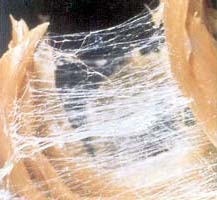The Rolfer continuously checks on the client to assess the intensity of sensation and can adapt pressure accordingly at any time given. Many clients experience a sense of release and more range of movement right after the session.
Unlike massage no oil or lotion is used during a session, as fascia (connective tissue) can change from a solid like state to a gel like state through direct pressure and heat – so the friction is part of the magic!  Also, unlike most massage, Rolfing is a participatory, awareness based process. You may be asked to breathe into tissue to help you surrender to what is…releasing resistance, make small movements under the practitioner’s hands or to stretch/ grow long out of a place where we are working. At it’s core, Rolfing is a self-help, self-paced practice. Ida Rolf when asked if Rolfing could be painful, said something to the effect of, “show me a body not in pain and I’ll show you pain free Rolfing”. Many clients say receiving Structural Integration significantly reduces the pain experienced in their daily lives or increases athletic functioning to such an extent, that short term discomfort on the table is worth the trade for the long term infinitely expanding benefits.
Also, unlike most massage, Rolfing is a participatory, awareness based process. You may be asked to breathe into tissue to help you surrender to what is…releasing resistance, make small movements under the practitioner’s hands or to stretch/ grow long out of a place where we are working. At it’s core, Rolfing is a self-help, self-paced practice. Ida Rolf when asked if Rolfing could be painful, said something to the effect of, “show me a body not in pain and I’ll show you pain free Rolfing”. Many clients say receiving Structural Integration significantly reduces the pain experienced in their daily lives or increases athletic functioning to such an extent, that short term discomfort on the table is worth the trade for the long term infinitely expanding benefits.






